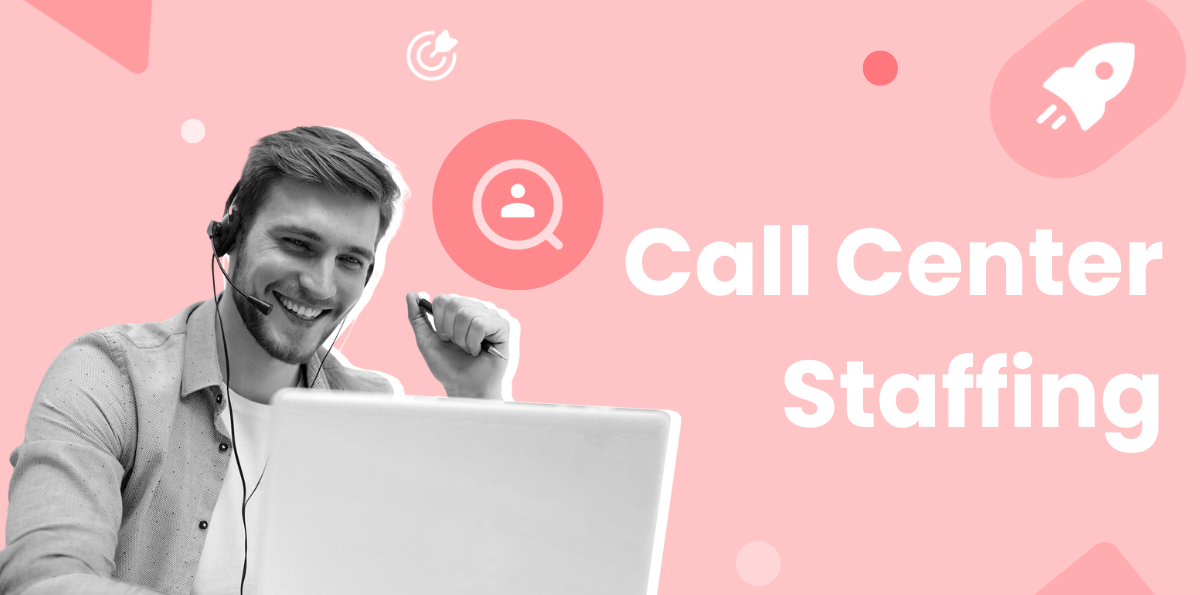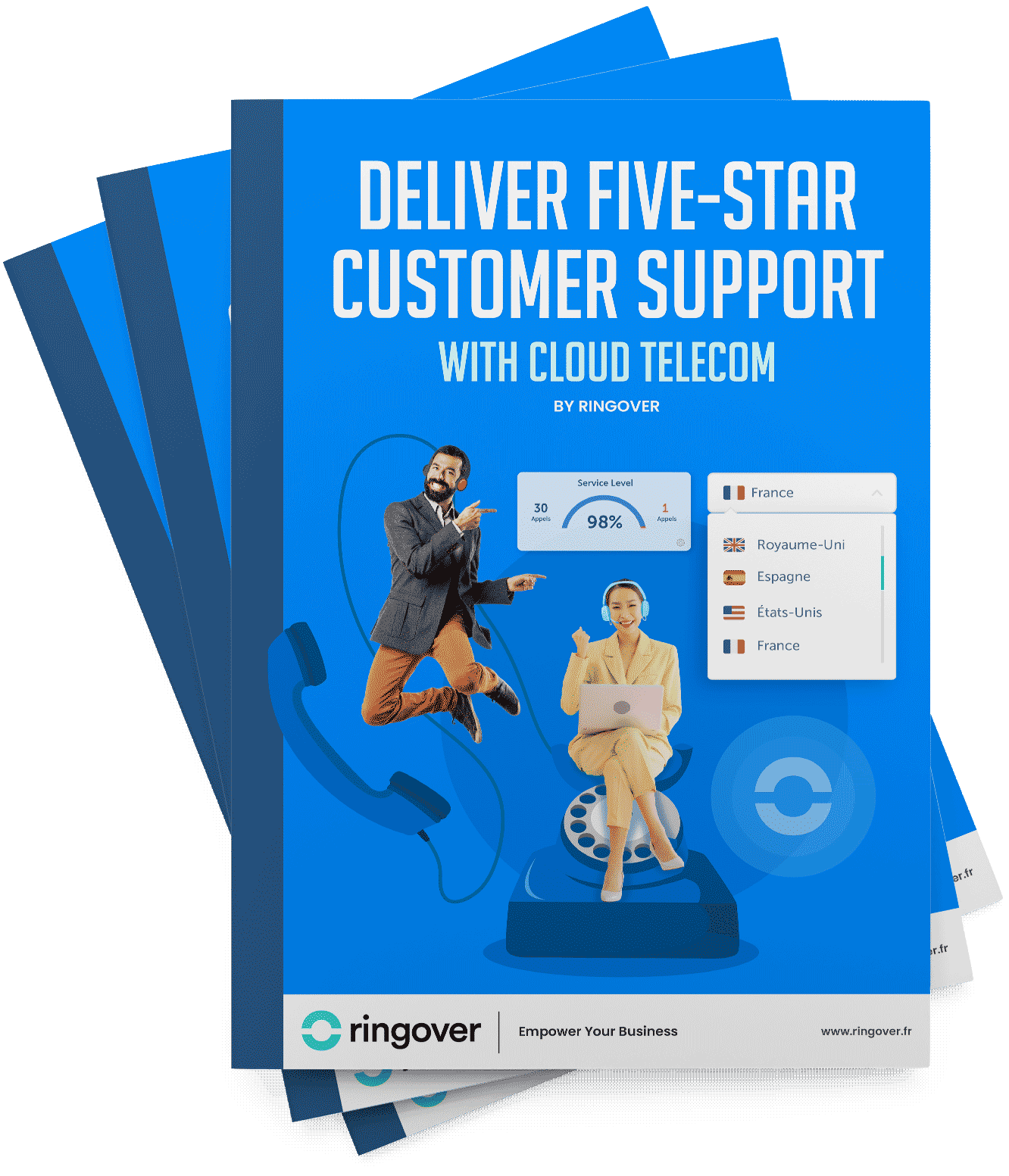Summary
This challenge goes beyond merely having enough staff; it involves crafting a team structure that excels in delivering outstanding customer experiences. Regardless of whether your call center is in-house, outsourced, remote, or a hybrid model, selecting the appropriate staffing model to match your business objectives and financial constraints is essential.
Our guide dives deep into the nuances of call center staffing, covering everything from identifying your staffing requirements and recruitment tactics to improving retention and boosting productivity. We'll examine the different staffing models, detail methods for determining the ideal agent count, and offer strategies to navigate common staffing hurdles.
Understanding Call Center Staffing Needs
Determining the Ideal Staffing Levels
Before you can begin calculating the staff needed in your call center, you'll need to understand your call volume and its variability. This includes analyzing the number of calls your center receives daily, weekly, and monthly, as well as identifying peak hours and periods of high demand, such as holidays or special events.
To calculate the ideal number of agents, you need to consider the average handling time (AHT) of each call, which includes the time spent speaking to the customer, time on hold, and any after-call work. The Erlang C formula is a widely used method for determining the optimal number of agents based on call volume, AHT, and desired service levels. This formula helps you balance the need to answer calls promptly with the cost of staffing.
Additionally, it's essential to factor in the occupancy rate and available work time. The occupancy rate refers to the percentage of time agents spend on call-related activities, typically between 80% and 85%. Available work time includes the total time agents are available to handle calls, minus breaks, training sessions, and other activities that take them away from their desks.
Roles and Responsibilities in a Call Center
A well-staffed call center is not just about having the right number of agents; it's also about ensuring that each role within the center is clearly defined and fulfilled.
Here are some of the key roles and responsibilities:
- Customer Service Representatives (CSRs): These are the frontline agents who handle incoming and outgoing calls, respond to customer inquiries, and resolve issues. They are essential for providing excellent customer service and ensuring customer satisfaction.
- Team Leaders/Supervisors: These individuals oversee the day-to-day operations of the contact center, manage agent performance, and ensure that service levels are met. They also handle escalations and provide coaching to agents.
- Quality Assurance Specialists: These roles focus on monitoring and evaluating the quality of calls to ensure that agents are adhering to company standards and providing high-quality service.
- Training Coordinators: Responsible for developing and delivering training programs to new and existing agents, ensuring they have the necessary skills and knowledge to perform their duties effectively.
- Workforce Management Team: This team is responsible for forecasting call volumes, scheduling agents, and ensuring that the contact center is adequately staffed at all times to meet service level goals.
Understanding these roles and ensuring they are well-staffed is vital for maintaining a smooth and efficient call center operation that delivers exceptional customer service.
Recruitment and Training Techniques
Effective Recruitment Strategies
Recruiting the right talent for your call center is a multifaceted process that requires a combination of strategic planning, effective communication, and the use of modern staffing technology.
Here are some key strategies to help you attract and hire top-quality candidates:
Look at the Data
To begin with, it is important to know your numbers and understand your market. Analyzing metrics such as overall turnover rate, voluntary vs. involuntary turnover, and turnover costs can help you predict future behavior and make better hiring decisions.
This data-driven approach ensures you are prepared to address potential turnover issues and attract candidates who are a good fit for your organization.
One way to get insight into your call center is to deploy a call center software like Ringover's, which provides a comprehensive analytics dashboard. You'll be able to understand performance at an individual and team level, so you can understand where your staffing needs are.
A VoIP phone provides more than just unlimited calling. It also works as an omnichannel contact center, providing text messaging, WhatsApp messages, voicemail, and more.
Recruit Internally
Another effective recruitment technique is to leverage your existing team. Asking your current agents for referrals can yield high-quality candidates, as they have a deep understanding of the job requirements and can pre-screen potential hires.
Implementing an employee referral program with incentives can further motivate your staff to recommend top candidates.
Meet Candidates IRL
Hosting open-house events or career days allows potential candidates to see the work environment firsthand, interact with current employees, and gain a realistic understanding of the job.
Get to Know Candidates via Technology
Utilizing technology effectively is another cornerstone of modern recruitment. Employing multiple assessment tools, such as job simulations and pre-employment tests, can provide a comprehensive view of a candidate's skills and personality. These tools help identify high performers and reduce the risk of making a bad hire.
Develop Your Employer Brand
Finally, branding your company as an attractive place to work is essential. Highlighting your company culture, offering competitive pay and benefits, and promoting opportunities for career growth can make your organization the employer of choice. Just be sure to set realistic expectations about the job's demands and challenges, as this will filter out candidates who are not suited for the role, saving you time and resources in the long run.
Ensuring your career page is optimized for mobile and using social media platforms to showcase your work environment can also attract a wider pool of qualified candidates.
Training for Excellence
Once you have recruited the right candidates, the next step is to ensure they are adequately trained to excel in their roles. Here are some training techniques that can help your call center agents achieve excellence:
Clearly Define the Roles
Providing detailed information about the job, including salary, working hours, and expectations, helps new agents understand what is required of them. This transparency is essential for setting the right expectations and reducing the likelihood of early turnover.
Leverage Simulations for Better Outcomes
These simulations allow new agents to practice handling real-world scenarios in a controlled environment, helping them develop the necessary skills and confidence to handle customer calls effectively. This hands-on approach also gives trainers valuable insights into the agents' performance and areas where they may need additional support.
Train Continuously
Regular feedback sessions, performance evaluations, and ongoing training programs help agents improve their skills and adapt to changing customer needs. Incorporating technology, such as AI-powered training tools, can enhance the training experience by providing personalized learning paths and real-time feedback. Empower by Ringover utilizes conversation intelligence software and sentiment analysis to identify topics discussed and emotions expressed during calls. In addition to the call monitoring and call whispering provided by the VoIP phone Ringover, it will be easier than ever to identify best practices and upskill agents in need of a boost.
Keep It Positive
Incentives for goal completion, friendly competition among coworkers, and opportunities for career advancement all contribute to a positive work environment. This culture not only helps agents feel valued but also motivates them to provide exceptional customer service.
Enhancing Retention and Productivity
Creating a Motivating Workplace Culture
Fostering a supportive work environment is essential. This involves ensuring that agents feel part of a team and are valued and respected. Open communication, collaboration, and recognition for excellence can significantly boost job satisfaction and reduce stress levels.
Providing clear career trajectory paths is another key factor. Agents who see a clear path for advancement within the organization are more likely to stay. Offering leadership training, mentoring programs, and opportunities for internal mobility can help agents feel that their roles are not dead-end jobs but rather stepping stones for career growth.
Encouraging autonomy and purpose can also drive motivation. Initiatives like "genius hours" where agents have the freedom to come up with new ideas and see them implemented can provide a sense of autonomy and purpose. Raising agents' awareness of their impact on end customers can also motivate them, as it helps them understand the value of their work.
Measuring and Improving Productivity
Measuring and improving productivity in a call center involves a combination of process optimization, technology utilization, and performance monitoring.
Process Optimization
Optimizing current processes is a foundational step. Conduct an in-depth review of all key processes, gathering data on performance metrics such as handle times, resolution rates, and call volumes. Identify bottlenecks and areas of inefficiency, and introduce improvements such as Lean Six Sigma principles to eliminate wasted steps and reduce variability.
Documenting optimized playbooks ensures consistent execution and removes friction from the workflow.
Deploy the Right Tools
Utilizing the right technology is essential for boosting productivity. Cloud-based call center software can provide productivity features like IVR menus, omnichannel communications, AI transcriptions, and call summaries. This technology supports business continuity during peak times without productivity losses and can also enhance agent retention by offering a better work-life balance.
Performance Monitoring
Regularly assessing agent performance and providing feedback is essential. Pull reports on individual agents to identify patterns of low performance and work with them to address these issues. Gamification in recruitment techniques, adjusting shifts to match agents' most productive times, and creating fun activities to boost morale can all contribute to improved productivity.
Monitoring key performance indicators (KPIs) such as response time, average handle time, and abandonment rate is vital. Using contact center software to track these metrics in real-time helps in making data-driven decisions to improve processes and agent performance. Publishing leaderboards to acknowledge and encourage top-performing agents can also create a positive competitive environment that drives productivity.
Call Center Staffing Guide FAQ
What is a FTE in a contact center?
A Full-Time Equivalent (FTE) in a contact center represents the number of full-time employees required to handle the workload. The FTE metric allows managers to estimate the number of full-time positions necessary to cover the expected call volume, accounting for hours of operation and the workload over a specific period. For example, if a call center operates 24/7, 3 FTEs may be needed to cover one position due to shift coverage requirements.
What is staffing in a call center?
Staffing in a call center involves determining the optimal number of agents required to meet service levels while balancing operational efficiency and customer satisfaction. This includes forecasting call volume, planning shifts, and scheduling agents to manage call flow effectively. Proper staffing ensures that customers receive timely responses without excessive wait times and that employees are neither underutilized nor overworked.
How do you calculate staffing in a call center?
Calculating staffing needs in a call center often involves several methods and metrics, including:
- Forecasting Call Volume: Estimating the number of incoming calls based on historical data.
- Erlang C Formula: A common formula used to calculate the number of agents needed based on call volume, average handling time, and target service levels.
- Shrinkage Calculation: Factoring in breaks, meetings, training, and time off to estimate how many additional agents are required beyond the Erlang C calculation.
- Schedule Optimization: Creating schedules that match agents' availability to peak and off-peak times to ensure coverage throughout the day.
Published on November 7, 2024.



